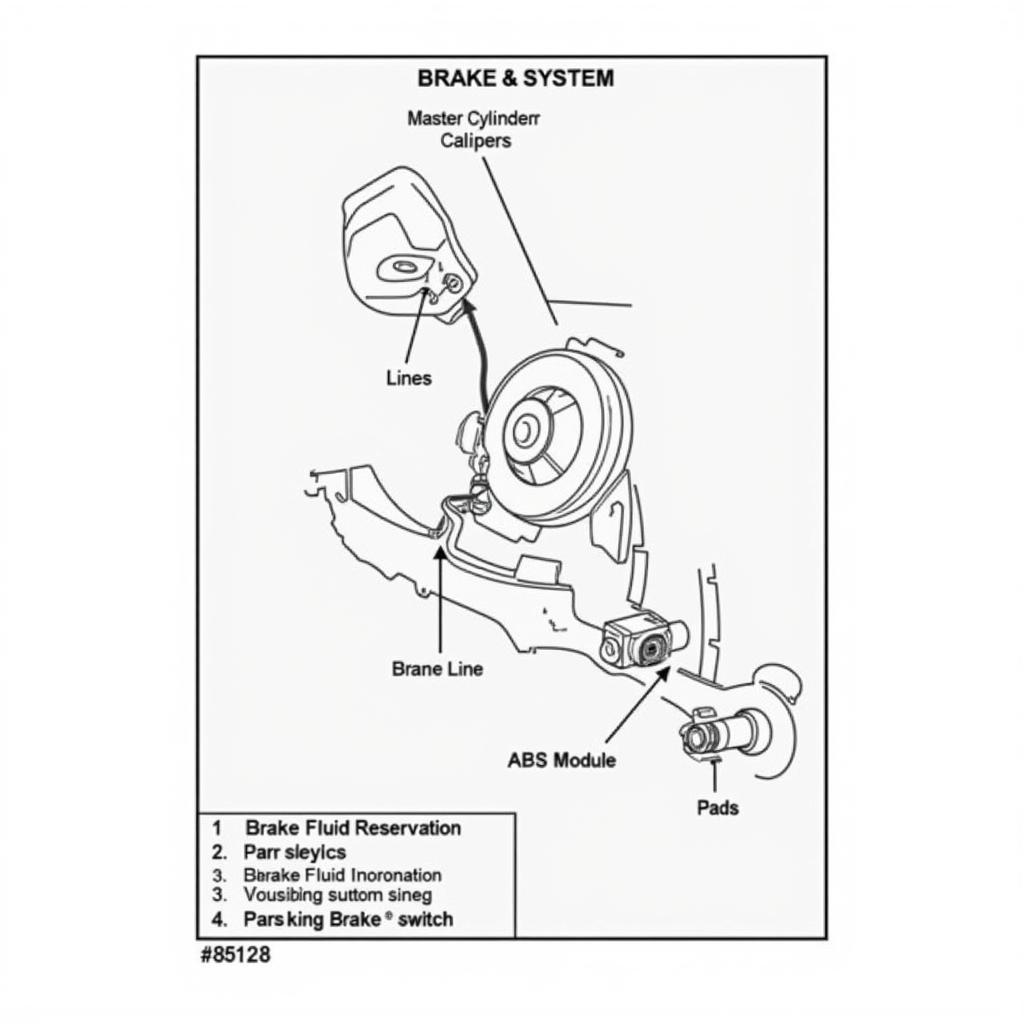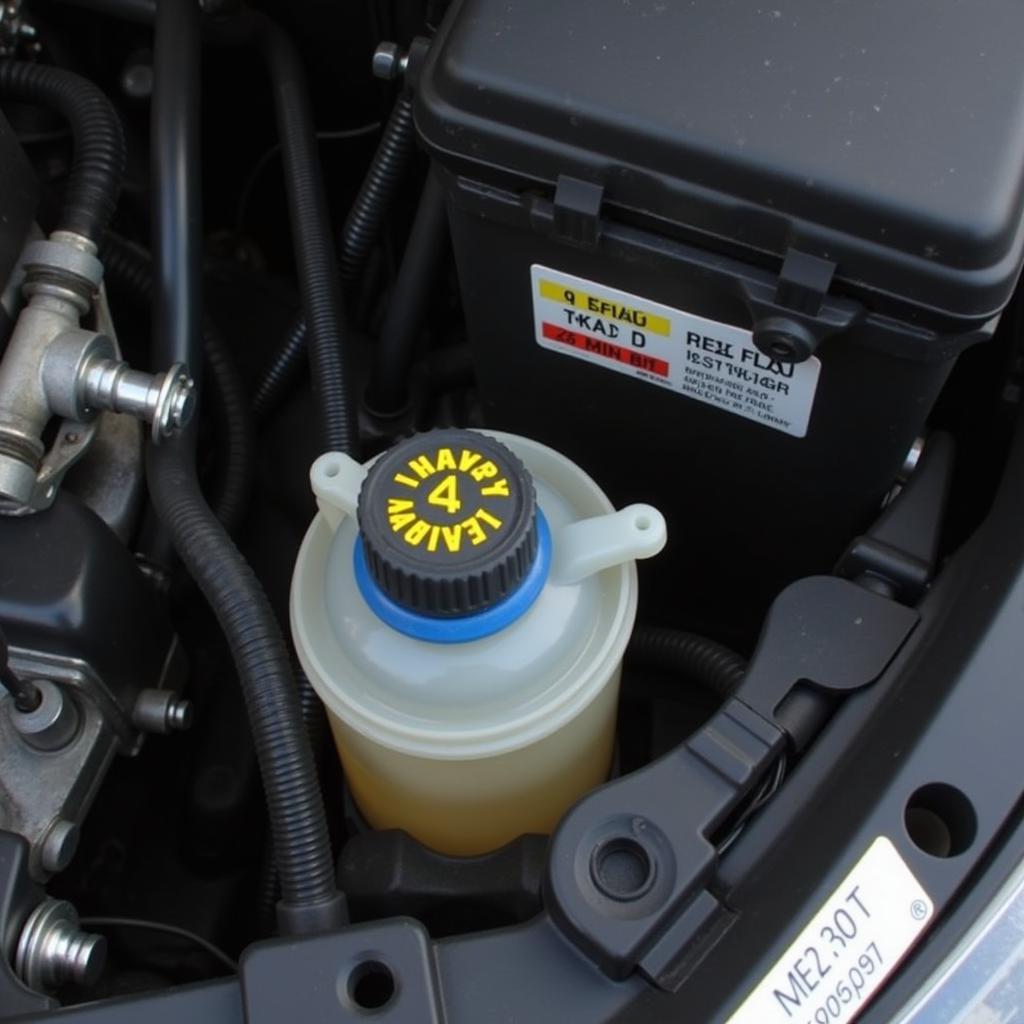The brake wear warning light on your Mercedes is a crucial safety indicator. Ignoring it can lead to costly repairs and compromise your safety. This guide explores the common causes, troubleshooting steps, and solutions for a Mercedes brake wear warning light, empowering you to address the issue effectively.
Understanding the brake wear warning light is essential for every Mercedes owner. A glowing light isn’t just an annoyance; it’s a direct message from your car’s braking system. This early warning can prevent significant damage and ensure safe driving conditions. mercedes benz brake wear warning light reset can provide immediate solutions for some models.
What Causes the Brake Wear Warning Light to Illuminate?
Several factors can trigger the brake wear warning light in a Mercedes. Worn brake pads are the most common culprit. As you drive, the friction material on the pads gradually wears down. Once it reaches a critical point, a sensor triggers the warning light. However, other issues can also cause the light to come on.
Beyond Worn Brake Pads: Other Potential Causes
Besides worn brake pads, a faulty brake pad wear sensor, low brake fluid, or issues with the ABS (Anti-lock Braking System) can also activate the warning light. A damaged wire or a malfunctioning sensor can send a false signal, even if your brake pads are in good condition. Similarly, low brake fluid can indicate a leak in the braking system, a serious safety concern.
Troubleshooting the Brake Wear Warning Light
When the brake wear warning light appears, the first step is to check your brake pads. Inspect the thickness of the friction material. If it’s less than the recommended minimum, it’s time for a replacement. Next, examine the brake fluid level. If it’s low, top it off and check for leaks.
Checking the Brake Pad Wear Sensor
If the brake pads and fluid levels are fine, the brake pad wear sensor might be the issue. This small sensor embedded within the brake pad can become damaged or worn out, triggering a false warning. A visual inspection can often reveal a broken or disconnected wire.
“Regularly inspecting your brake system, including the pads, fluid, and sensors, can prevent unexpected issues and costly repairs,” advises John Miller, a seasoned automotive diagnostician with over 20 years of experience.
Resetting the Brake Wear Warning Light
After addressing the underlying issue, the brake wear warning light may need to be manually reset. Some Mercedes models allow for a simple reset procedure using the steering wheel controls and the instrument cluster. However, other models might require diagnostic equipment to reset the light. mercedes benz brake wear warning light provides detailed instructions for resetting the warning light on different models.
Utilizing Remote Diagnostics and Programming
In some cases, remote diagnostics and programming can offer a convenient solution. Specialized software allows technicians to access your vehicle’s computer system remotely, diagnose the problem, and even reset the warning light without a physical visit. This can save time and money, especially for software-related issues. mercedes sprinter brake wear warning light offers specific guidance for Sprinter van owners.
“Remote diagnostics and programming are transforming the automotive repair industry, offering efficient and cost-effective solutions for many common issues,” says Dr. Emily Carter, a leading expert in automotive software engineering.
Conclusion
The brake wear warning light in your Mercedes serves as a vital safety reminder. Addressing the issue promptly can prevent further damage and ensure your safety on the road. By understanding the potential causes, troubleshooting steps, and available solutions, you can take proactive measures to maintain your braking system’s optimal performance. Ignoring the brake wear warning light can lead to costly repairs and compromise safety. Remember to consult your owner’s manual or seek professional assistance if you’re unsure about any aspect of the process. w203 parking brake warning provides further insights for owners of the W203 model.
FAQ
-
What does the brake wear warning light look like? It typically appears as a circular symbol with a segmented circle inside, resembling a brake disc with brake pads on either side. It may be accompanied by an exclamation mark.
-
Can I drive with the brake wear warning light on? It’s not recommended. While you might be able to drive for a short distance, continuing to drive with worn brake pads can damage the rotors and other components.
-
How often should I check my brake pads? It’s a good practice to visually inspect your brake pads every few months or every 10,000 miles.
-
How much does it cost to replace brake pads on a Mercedes? The cost varies depending on the model and the type of brake pads used.
-
Can I replace my brake pads myself? While possible, it’s generally recommended to have a qualified mechanic replace your brake pads.
-
What is the difference between the brake wear warning light and the parking brake light? The brake wear warning light indicates worn brake pads or low brake fluid. The parking brake light signifies that the parking brake is engaged.
-
Can a faulty ABS sensor trigger the brake wear warning light? Yes, in some cases, a problem with the ABS system can also activate the brake wear warning light. brake warning light bum mercedes can offer further assistance with this issue.


